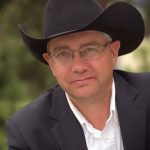Mainstream agriculture tends to immediately discount anything proposed by the National Farmers Union.
On the issue of farmland ownership and control, however, there are some NFU viewpoints that resonate with a majority of the farm population.
The NFU has released a 2015 update of its report entitled Losing Our Grip. If anything, farmland ownership is an even bigger issue now than when it was first released in 2010.
You have to take the whole document with a grain of salt because the socialist dogma is rather pervasive, but when you look beyond the far left-wing bias, there are many interesting facts and observations.
Read Also

Growth plates are instrumental in shaping a horse’s life
Young horse training plans and workloads must match their skeletal development. Failing to plan around growth plates can create lifelong physical problems.
One of the main values of the report is that it profiles the main investment companies involved in the Canadian land market. The list includes AgCapita, Assiniboia, AGInvest, Bonnefield and Walton International.
One Earth Farms is discussed, as is the financially troubled Broadacre Agriculture. While these failed mega farms have received a lot of press, some lesser known players are also included. For instance, the report says Nil-Ray Farms, which is backed by Brian and Lee Nilsson — former owners of XL Foods — owns 15,000 acres in five Saskatchewan rural municipalities.
We don’t hear a lot about the Irving family of New Brunswick here in the West, but the report says J.D. Irving, which is owned by the Irving family, is among the world’s largest landowners. It’s always interesting to know the individuals behind the big companies, and the report provides that information.
Most of the information is publicly available with a bit of digging, but there’s value in having it researched and compiled in one document.
The report decries the increase in Canadian farm debt, which it says has now increased to $78 billion. Low interest rates mean producers have been able to handle an increasing debt load with few problems, but it could certainly become an issue in the years ahead, depending on what happens with interest rates and commodity prices.
The report ends with a series of recommendations. Many will not be palatable to those who subscribe to a more centralist philosophy, but even some fervent free enterprisers are uncomfortable with a wide open marketplace when it comes to farmland ownership.
One of the recommendations is that farmland be owned only by individuals and corporations that reside within each province. That’s the way the law used to be in Saskatchewan, but there’s little likelihood of reverting back to that restriction, which the previous NDP government removed.
However, that is the way farmland ownership works in Prince Edward Island, which has strict limits on how much farmland individuals and corporation can own. The NFU report said governments should consider legislating appropriate maximum sizes of land holdings elsewhere, but it’s difficult to believe this will ever happen beyond P.E.I.
On the other hand, sensitivity certainly exists about the ownership of Saskatchewan farmland by pension funds, and the Saskatchewan government is moving to make sure pension plans don’t increase their holdings. An open market might be viewed as best for most commodities, but land is viewed differently.
One NFU recommendation that makes good sense revolves around Rasps. Some farmland investment companies promote their shares as RRSP eligible. It makes no sense that an investor can get a tax deduction for a farmland investment while a farmer cannot. This would seem to be a topic that warrants further study.
Losing Our Grip — 2015 Update is available at www.nfu.ca.















